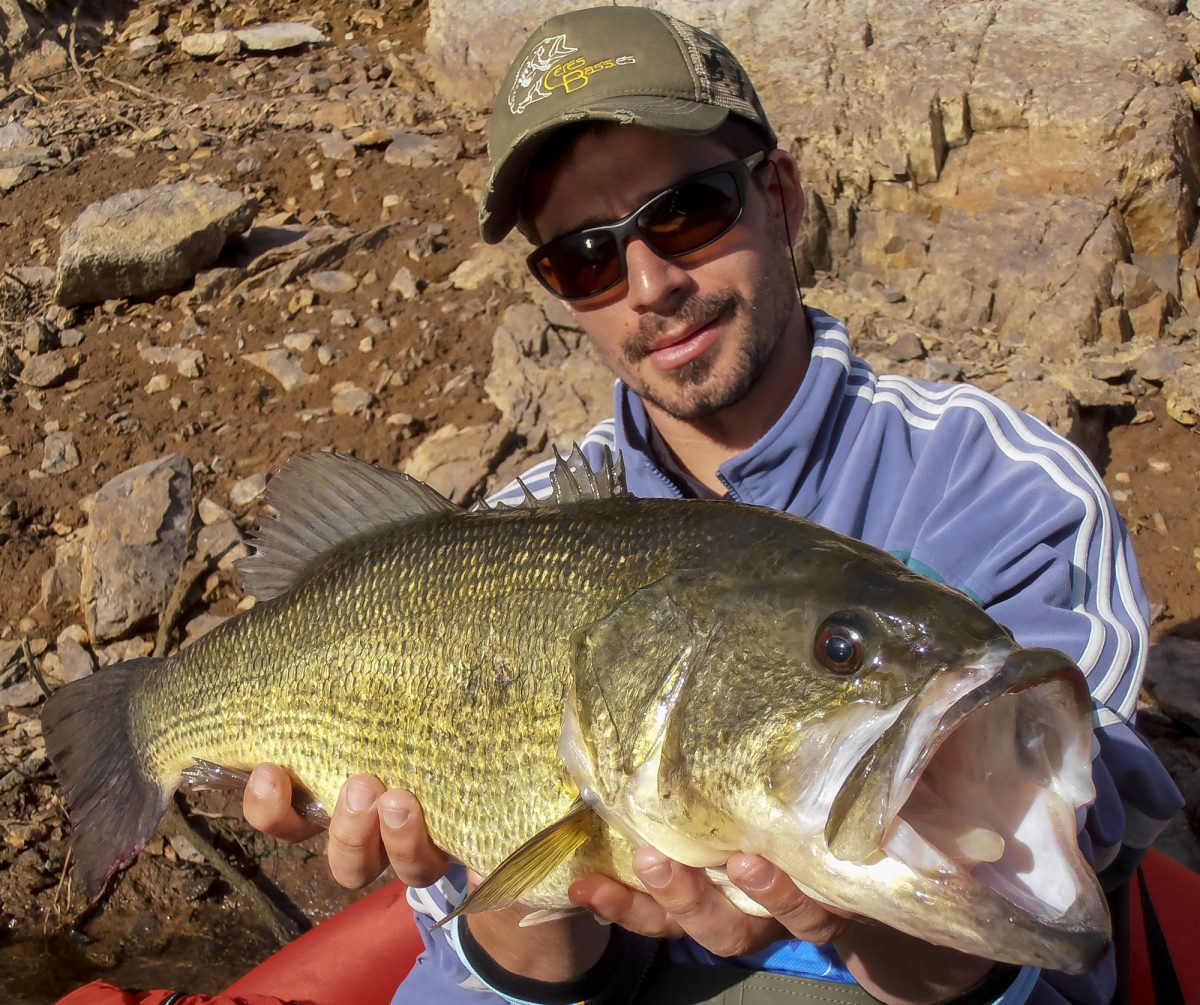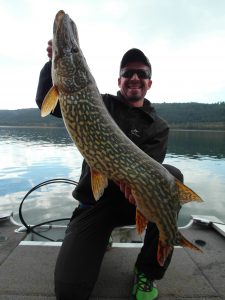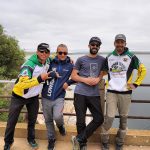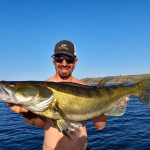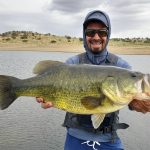Characteristics of Cíjara lake
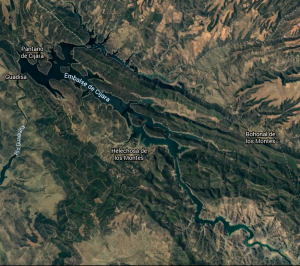
With a capacity of 1505hm3 and an area of 6565 hectares, Cíjara lake is another of the best known reservoirs for sport fishing. It is a clear water reservoir, although usually not as much as its neighbours García Sola and Orellana, and can find areas with more turbid waters than others in different parts of the reservoir.
Its main uses are electricity production, supply and irrigation, and level changes are relatively frequent, ranging from 700 to 1200 hm3 in a “normal” year. Do you want to know the level in real time? Click here.
Bottom composition and structures
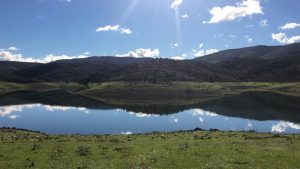
The bottom of the reservoir is made up of very varied rocks that alternate in different areas: slate, schist, quartzite, greywacke, sandstone… with different levels of degradation.
It is a really extensive reservoir and we can find all kinds of structures. There are miles of creeks, huge beaches, but there are also multiple cuts and small boxed creeks, as it is in a fairly rugged area. We have quite interesting moderate slopes, so we can fish at a certain depth in a good number of areas.
Cut and “textbook” points, rip rap areas, large stone areas, submerged islands… we can find practically all kinds of structures, as long as we know the reservoir, that is.
Vegetation and cover
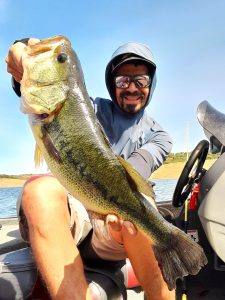
The submerged vegetation, in the form of old trees, bushes, etc., is not notable for its abundance, although in rainy years, when the water level reaches the highest levels, a good number of bushes and some trees will be submerged, providing then a good amount of wood cover.
The underwater vegetation is quite abundant, we find extensive areas with interesting weeds, although sometimes the marked changes in level leave this vegetation too deep or even out of the water, and a significant percentage of it dries out.
Main fish species
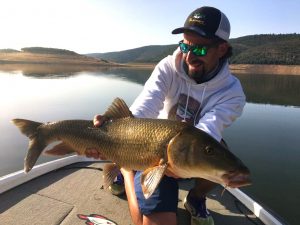
Cíjara is one of the reference reservoirs in the world of sport fishing. Although it is not at its best either, the black bass and pike populations are starting to recover after several bad years.
It is no coincidence that the Euro Nitro Cup (one of the most important competitions at European level in the world of black bass) have been held in this lake most of the times.
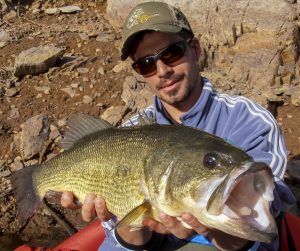
- Black Bass. If there’s one thing Cijara is famous for, it’s its black bass populations. After some difficult years in which excessive fishing pressure, the reduction of the bleak populations and other factors were determining in the reduction of their populations, it seems that it is recovering again. Specimens weighing 1,5 to 2 kg are relatively abundant, with specimens weighing more than 2,5 kg or even 3 kg being not too rare.
- Pike. This reservoir has also stood out for its large pike, which like black bass has suffered a difficult time. Pike measuring over 110 cm have been caught in this reservoir, and it is not uncommon to find specimens measuring 80 to 90 cm.

Nice pike from Cíjara - Zander. Present in the reservoir for a few years already, its populations suffered an explosion several years ago, and today we find more stable populations, with important densities. They reach good sizes, with the largest specimens exceeding 80 cm.
- Iberian barbel. In this reservoir the barbels reach really important sizes, having caught specimens of more than 9kg of weight. In certain periods they bite very well with artificial lures.
- Carp. It is not particularly famous for its carps, but it has a good population of them, especially in intermediate sizes. It is ideal for feeder or match fishing of good specimens.
Baitfish in Cíjara lake
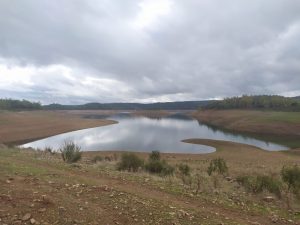
The bleak is the main species of bait fish and its densities are growing today. After the initial explosion during which we could see endless shoals of bleak, came a time of drastic reduction, due in part to the entry of the zander. Today their populations are growing, and some interesting “balls” can be found again.
The crawfish is very abundant too, providing an interesting food source, especially in areas where there are not too many bleaks.Finally, we should also mention the sunfish,carp barbel and zander fry as a source of food for predatory species.
Access and navigation
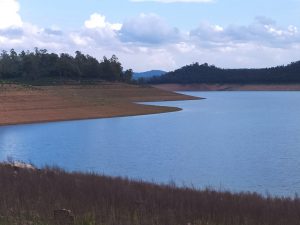
Navigation is allowed in a large part of the Cíjara reservoir, except for some sections in spring, to preserve the reproduction of protected birds.
Most of the banks are easily passable, although we must be careful with the cut-off areas, where fishing from the shore is not recommended due to their dangerous nature. There are quite a few areas that are difficult to reach from the shore, because there are not too many roads leading to the water.
For fishing with float tube or pontoon, no permit is required, because if they are less than 2.50m long, they are considered to be a complement to bathing according to the current legislation (2024).

